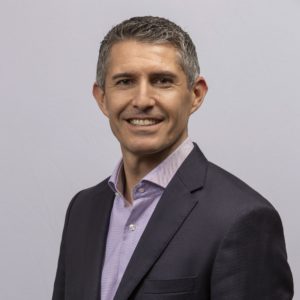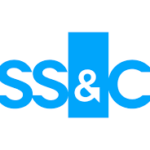Al Castillo, senior director, solutions management for Advent Outsourcing Services (AOS), talks about the issues that helped SS&C Advent win Best Outsourcing Provider.

Al Castillo
(Editor’s note: Al Castillo, senior director, solutions management, Advent Outsourcing Services (AOS), has an idea why there is a major move to cloud-based managed services among SS&C Advent’s customer base. “As such, it’s an easy decision to pivot the deployment responsibility to a provider that has the knowledge and experience — and we’re seeing this appears to be true whether a firm is a startup or established hedge fund, RIA or wealth manager,” Castillo says. “The other thing I’d say … is that firms are being more honest with themselves about their ability, and quite frankly appetite, to keep up with systems maintenance.” In this Q&A, he tackles the cloud-related issues his clients are facing. SS&C Advent won Best Outsourcing Provider via the 2019 FTF News Technology Innovation Awards.)
Q: Has the AOS team seen a trend toward all-in-one solutions or toward best-of-breed? Or something in between?
A: I’d say a little bit of both; let me provide some context.
On the alternative investment side of our business, it is common to see a firm select Advent Geneva, Eze OMS and SS&C Recon as their core solution set.
Historically, we would’ve thought of this as a best-of-breed approach given that the solutions were provided by three different vendors. Additionally, from a hosting perspective, a firm may have had all three apps hosted, each by a different provider, each provider being an “expert” on that particular solution. So, in this example, we definitely saw “best-of-breed” being used in the past.
Fast forward to SS&C acquiring Advent and Eze, so that now AOS is in the unique position to provide an “all-in-one solution” — one hosting provider — while also allowing clients to use the best solution to solve each particular business need. Firms have found this choice very attractive and thus we’ve seen good momentum with this offering.
On the asset and wealth management side of things, where Advent Portfolio Exchange, Moxy, and more recently Advent Genesis, have experienced widespread adoption as a “suite solution,” we’ve seen clients interested in expanding their all-in-one approach with Advent.
In this instance, what we’ve heard time and again from our clients is “who better to host and manage my back office on Advent solutions than the vendor that created those solutions.”
Clients have gone on to say they like the benefit of “one throat to choke.” It’s maybe not the most elegant sentiment but we like that we can simplify our clients’ lives by allowing them to work with a single vendor to run their business. And, in fact, many of our wins in this space the past few years have been from displacing a third-party vendor for hosting, operational services, or both.
 Q: What are the most common data quality issues among clients that AOS has uncovered?
Q: What are the most common data quality issues among clients that AOS has uncovered?
A: The first one that comes to mind relates to data received from custodians.
In fairness, I don’t know if I’d call it a quality issue; I’d say it’s more of an inconsistency issue with how one trust system might label and send across a transaction versus another. Despite efforts on all parts to normalize data, we still have to monitor and manage for variations between how one custodian and another sends across data for the same type of transaction.
Corporate actions are another area that comes to mind. Sometimes data is incomplete, changes or comes along over an extended period of time. Comparing and managing how and when a corporate action was booked at a custodian versus the data we receive via Advent Corporate Actions is a common challenge to work through.
Q: How does cloud computing help improve data quality?
A: Historically, I would’ve focused on scale and speed.
If I think about Advent Custodial Data (ACD) and what we’ve been able to do there — the aggregation, normalizing and distribution of custodial data — that allowed us to provider higher quality data, to more clients, sooner. And we were able to build a repeatable process and scale it to over 800 custodians and counterparties.
So, we’ve done cloud computing for quite a while, and seen the value, and we’ve continued to apply those lessons as we’ve built and deployed other solutions — Advent Portfolio Data, Advent Market Data, and more recently, Advent TransPort.
Given all of those established solutions with defined controls, by the time the AOS team gets data, it’s already high quality. Yet, the reality is that many clients still have “downstream” processes that require data manipulation and as soon as those changes are applied you have to worry about the introduction of exceptions.
Fast forward to today and I would say the focus is shifting to pattern recognition and machine learning. The former is very powerful and impactful for our team because we process so much data on behalf of our clients that there is important information that can be gleaned at a macro level.
We use that information to improve our processes from top to bottom — from enhancing data feeds to improving how we process and manipulate data, and so on.
This is the Holy Grail, and though we benefit from it today, there is still room to improve the ability to identify a pattern and to suggest and ultimately apply changes to data without any human intervention; it is incredibly exciting.
There are, of course, checks and balances that need to be put in place before we get here, but these are some of the items we’re researching or that we’ve already deployed as proof of concepts.
Q: Why does Advent offer an advanced data governance tool that the AOS team uses to monitor and identify exceptions?
A: Because “trust us” just doesn’t cut it.
In all seriousness, we understand that many of our clients have reducing risk as one of the top reasons they select us to manage their back-office processes. As such, during the implementation process we spend a good deal of time educating clients not only about what we do but how we do it. We feel that part of building trust with new clients is to share what happens “in the cloud” on their behalf.
Over the past year, as we’ve had these conversations with clients, one theme that has popped up is the pressure our clients feel from their regulators, external auditors and so on with regard to the level of oversight they have on their outsourcing provider.
With this in mind we’ve upped our investment on the data governance side of things to centralize how our team manages the various workflows for a client which allows our team to provide timelier and more detailed updates on the state of a client’s data and system readiness.
We’ve made a great deal of progress in this area. But we continue to invest here because we not only want our clients to feel comfortable with selecting us as their provider, we want them to be able to show the regulators how effective their ability to monitor the work we do on their behalf is.
Q: Why is it important for clients to get their downstream processes done earlier and much sooner than before?
A: This trend was visible last year and has continued. We still see our North American client base expanding into international markets. As such, having data that is largely processed by 8:30 a.m. ET doesn’t cut it anymore as some parts of a firm will have already been up and working for hours by then. They need to be able to feed other systems, know their positions, and service their clients.
Also, the daily or weekly use of client portals by our clients’ clients is becoming more prevalent.
Whereas in the past “end clients” might not see or ask questions about transactions and holdings until after month end now they’re often expecting their data to be uploaded to a portal daily and they want to be able to ask questions on that data immediately.
Our goal is to get all client-facing data available for review as early as possible to enable those folks to be in a better position to do what they do best: run their business, manage their portfolios and serve their clients.
Need a Reprint?